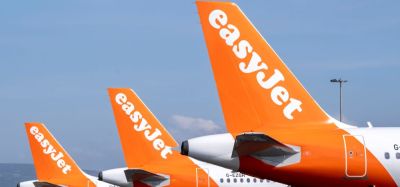Aircraft ground equipment standards: adapting to an evolving market
Posted: 1 October 2010 | Jean-Jacques Machon, Vice-chair of ISO TC20/SC9 | 1 comment
The worldwide trend towards ever safer GSE
No airport in the world, be it the smallest, can operate today without some fleet of aircraft ground equipment (GSE). How is it possible, with so many equipment types in thousands of airports in all the countries in the world, to immediately know what a given piece of GSE, wherever it is used, is capable of? Standards are the answer. And standards for GSE have been developed over four decades by several organisations in the industry, culminating in International Standards that give them the necessary worldwide application.
The worldwide trend towards ever safer GSE
No airport in the world, be it the smallest, can operate today without some fleet of aircraft ground equipment (GSE). How is it possible, with so many equipment types in thousands of airports in all the countries in the world, to immediately know what a given piece of GSE, wherever it is used, is capable of? Standards are the answer. And standards for GSE have been developed over four decades by several organisations in the industry, culminating in International Standards that give them the necessary worldwide application.
The ISO TC20/SC9, Air cargo and ground equipment, sub-committee started in the late 1960s when the essential task was defining the standards for all sorts of totally new equipment needed to service then new wide-body containerised aeroplanes coming in, starting with the impressive B747. Such a task by nature is never totally completed, because of changes in later generations of aeroplanes and incorporating acquired experience. After dealing with technology changes in e.g. containers or aircraft towing, it handled the introduction of regional aeroplanes (more regional jets are put into service each year than mainline aeroplanes altogether), then GSE standards to support entry into service of the even more impressive A380, the first three decked aeroplane.
Technology changes were accompanied by industry changes affecting the market served by TC20/SC9. Since it standardises interface between aeroplanes and their servicing equipment, this market includes several tiers, from the airframers (originally a handful, now even less) to the manufacturers of airborne equipment such as unit load devices (ULD) and servicing equipment that remains on the ground, or GSE. ULD and GSE manufacturers are more numerous than airframers, yet they are still concentrated in a small number of countries. What is worldwide is the use of equipment by the airlines and airport handling services providers: there are hundreds, even thousands, in all countries. But significant market changes occurred:
Free webinar – The future of asset management in global aviation
15 January, 2026, 02:00PM GMT
Join this virtual panel to hear from some of the AtkinsRéalis and aviation sector experts as we discuss how asset management is changing and the impact it will have on the future operations of airports throughout the world.
◆ while initially most airlines had been selfhandling their flights at airports, this activity was more and more sub-contracted, implying more numerous service providers
◆ initially also, most airlines had developed their own specifications for purchasing equipment, and ISO standards were a common guide for these. Services providers and most of today’s airlines don’t anymore, and now tend to purchase offshelf equipment, meaning the ISO standards must be primarily applied at the design stage by equipment manufacturers.
Such changes in technologies and industry organisation already led TC20/SC9 to progressively adapt its standards to market evolution:
◆ for airborne equipment such as ULDs (containers and pallets), the flight safety objectives and the need to comply with stringent regulatory (Civil Aviation) requirements always came first
◆ conversely, for GSE there are no such universal regulatory requirements. In order to meet the standardisation objective without hampering technical creativity, SC9 standards were expressed in function and performance requirements, leaving open the variety of technical designs that can be used. Special attention was paid to aeroplane safety, but also, increasingly, to airport staff safety requirements
◆ the industry being quite organised, considerable work is discussed in other forums before being taken up as an ISO standard. Thus TC20/SC9 closely cooperates with IATA1 (ULD Panel and, for GSE, Ramp Services Group), SAE2 (AGE-2 committee equivalent in scope to SC9, and G-12 for de-icing), AEA3, and CEN4/TC274 (as regards the staff safety issues on GSE), which must be thanked for a good share of the International Standards produced.
Recent or current TC20/SC9 projects include the latest technology developments affecting ground handling of aeroplanes and cargo, for example:
◆ its WG1, aeroplane de-icing, is busy with tracking the changes concerning this function, essential for flight safety. It is both a highly scientific area, with permanent laboratory testing going on, and a constantly changing one: details of methods and fluid specifications are revised every year based on operating experience for the past winter season, as well as aerodynamic knowledge progress
◆ its WG2, airworthiness, undertook a project to replace growingly obsolete 40 year old criteria used for certification of air cargo ULDs by a streamlined and modernised document, intended as a reference for Civil Aviation authorities’ approval procedures. It is also exploring means to develop ULDs with fire containment capability in order to better protect against cargo fires on board flights
◆ a new WG3, baggage handling, was recently constituted to develop a new breed of standards regarding the ergonomics of the many work stations contributing to baggage handling at airports, aiming at reducing the much too high rate of musculo-skeletal diseases (MSD) among the workers concerned, thereby also alleviating the considerable costs they result in for the operators.
This is a first example of a major recent trend of better adaptation to the market, i.e. not only new technology, but new objectives being brought to standards.
The new objective is to not only address the traditional way of doing things, but to aim at minimising the overall costs to the operators, which are often heavily burdened by the cost of work accidents and professional disabilities. Depending on each company’s insurance scheme (and here the situation is quite different between countries, e.g. Europe and the U.S.), the cumulated cost of work interruptions and, even more, life pensions served to workers prematurely retired due to disability, can easily be astronomical and a major management policy concern. This is why there is growing interest and involvement of the insurance organisations besides the more traditional actors of GSE standardisation: airlines, handling agencies and manufacturers.
But this significant change of focus is far from being limited to the baggage handling area. In fact, it potentially concerns all ground support equipment at airports. In this respect, the European legislation has played an important role to awaken the industry: the European Machinery Directive, first introduced in 1992, revised and expanded in 20065, made it a legal requirement for all new GSE to be used at European airports – wherever it was built – to apply all known technology to prevent accidents to workers, under the manufacturer’s responsibility. A series of 24 European standards (ENs) were then developed in application by CEN/TC274 and published from 2000 on to list the main hazards, safety objectives and recommended design solutions for each family of GSE. They are currently undergoing their first revisions to take into account experience.
Some of the applications have been spectacular. All manufacturers had to exercise their maximum ingenuity in identifying and implementing innovative design solutions. And feedback from the field clearly indicates that some, at least, of the targeted causes for accidents were all but eliminated with the new equipment. It is expected this continued effort will become more and more effective.
From an ISO International Standards perspective, however, this evolution resulted in difficulties:
◆ ISO GSE standards aimed, and still do, at specifying equipment function and performance, and avoided to state design solutions in order not to restrict manufacturers creativity
◆ the requirements of the European market, driven by law, did not necessarily have to apply in other parts of the world as they entailed an equipment cost increase – even though limited – and some sophistication that was supposed not to be welcome anywhere.
Recent surveys tended to provide a rather different feedback: a significant and growing number of purchase orders from several parts of the world, notably Asia, are specifying conformity with the EN standards, perceived as providing the best guarantees of staff safety. On this basis, TC20/SC9 decided at its latest meeting in Cologne (Germany) by mid-July 2010 to progressively align the International Standards for GSE on most of the requirements specified in the ENs. This will be a long haul job: it had taken nearly 10 years for CEN/TC274 to develop these. Once it is completed, there may well be, again, a single set of design requirements for GSE worldwide.
In addition to this new general objective, technology changes will also drive TC20/SC9 programme of work in the coming years. Potential challenges to come might include:
◆ performance standards for both ‘passive’ and ‘active’ improved aeroplane interface protection systems to reduce damage to aircraft from GSE, maybe even more important than ever with the new composite fuselage aeroplanes such as the A350 and B787
◆ enhanced ground electrical supply requirements for newer aeroplane types such as the B787
◆ function and safety requirements for aircraft bulk loading systems (ABLS) extensions to belt conveyors deploying inside cargo compartments
◆ safety standards to support the expected development of flights ‘dispatch towing’ (high speed / high weight) to runways in order to save fuel
◆ performance and reliability standards for developing automation, e.g. for passenger boarding bridges deployment etc … You name it…
Overall, while air cargo and ground equipment have become mature industries, they are still progressing by incremental steps with each new generation of aeroplanes, as well as experience. TC20/SC9, together with its cooperating industry groups, will be able to cope with the technology challenges. But some of the challenges will not be technical: a permanent one is there are still only a few countries with top level expertise in the areas concerned. In this respect there is hope that recent members like Brazil or China, developing an active aviation industry, will be taking an increasing part.
Needless to say, ISO TC20/SC9 welcomes all inputs and suggestions from anyone in the industry. It invites contributions, proposals and/or regular participation from GSE experts in all countries.
References
1. International Air Transport Association
2. Society of Automotive Engineers
3. Association of European Airlines
4. Comité Européen de Normalisation
5. Directive 2006/42/EC of the European Parliament and of the Council of 17 may 2006 on machinery (published in the Official Journal of the European Union, 09 June 2006)
6. Abbreviated titles. International Standards can be obtained from each national standards institute (AENOR, AFNOR, ANSI, BSI, DIN, DS, NEN, OS, etc..).
About the Author
Jean-Jacques Machon
Jean-Jacques Machon, Civil Aeronautics engineer, held for over 20 years responsibility for cargo and ramp technical matters in Air France, as aircraft handling manager then VP aircraft and airports. After an early retirement, he is a consultant in airline ground operations and cargo systems. He contributes to European and U.S. standards organisations, and is Vice-chair of ISO TC20/SC9. Contacts: + 33.1.3053.66.23 / [email protected]
Stay Connected with International Airport Review — Subscribe for Free!
Get exclusive access to the latest airport and aviation industry insights from International Airport Review — tailored to your interests.
✅ Expert-Led Webinars – Gain insights from global aviation leaders
✅ Weekly News & Reports – Airport innovation, thought leadership, and industry trends
✅ Exclusive Industry Insights – Discover cutting-edge technologies shaping the future of air travel
✅ International Airport Summit – Join our flagship event to network with industry leaders and explore the latest advancements
Choose the updates that matter most to you.
Sign up now to stay informed, inspired, and connected — all for free!
Thank you for being part of our aviation community. Let’s keep shaping the future of airports together!


















You made a good point when you said that GSEs play a vital role in the aircraft industry and that standards and certifications have to be set to identify a reputable GSE for an aircraft. This makes sense because series of certifications would mean there’s greater chances of safety and quality being adhered to to make sure that the aircraft is taken care of. If I were to own a plane, I’ll make sure to find a reputed GSE that has the needed certifications to operate and maintain the quality of my airplane.